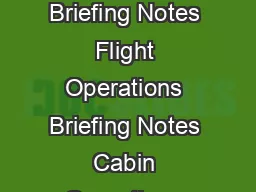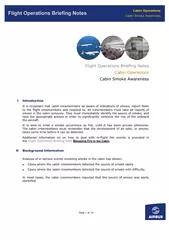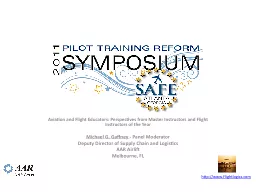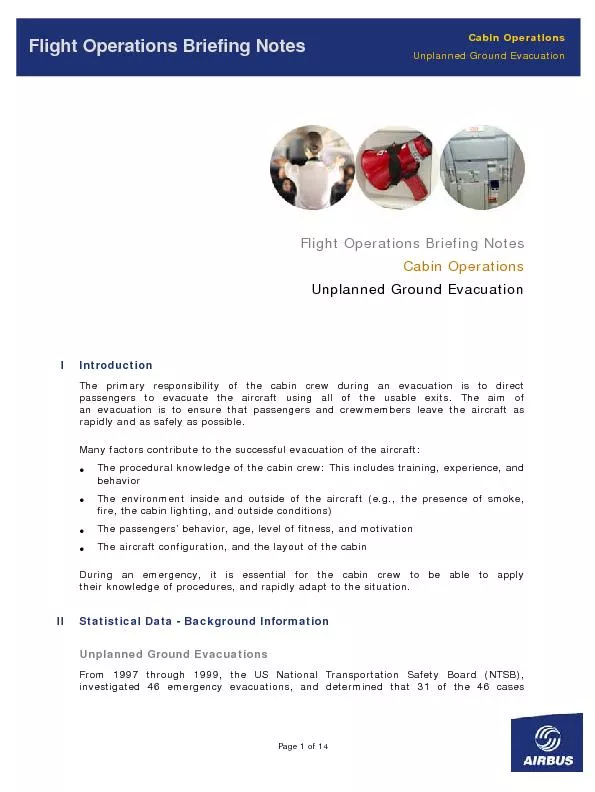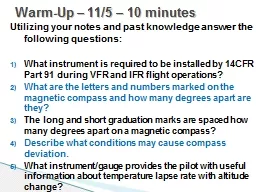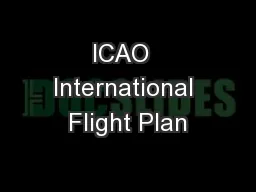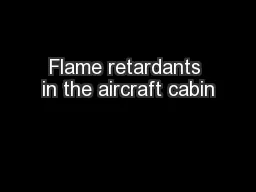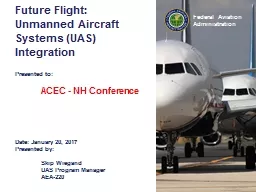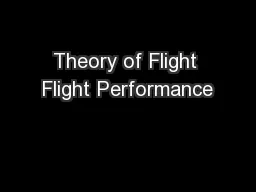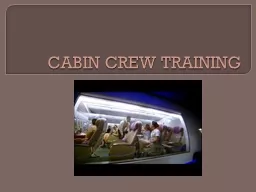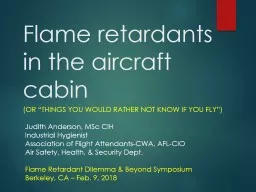PDF-Cabin Operations Cabin Decompression Awareness Flight Operations Briefing Notes Flight
Author : tatiana-dople | Published Date : 2015-03-15
The purpose of these systems is to provide a safe and comfortable cabin environment and to protect all cabin occupants from the physiological risks of high altitudes
Presentation Embed Code
Download Presentation
Download Presentation The PPT/PDF document "Cabin Operations Cabin Decompression Awa..." is the property of its rightful owner. Permission is granted to download and print the materials on this website for personal, non-commercial use only, and to display it on your personal computer provided you do not modify the materials and that you retain all copyright notices contained in the materials. By downloading content from our website, you accept the terms of this agreement.
Cabin Operations Cabin Decompression Awareness Flight Operations Briefing Notes Flight: Transcript
Download Rules Of Document
"Cabin Operations Cabin Decompression Awareness Flight Operations Briefing Notes Flight"The content belongs to its owner. You may download and print it for personal use, without modification, and keep all copyright notices. By downloading, you agree to these terms.
Related Documents

